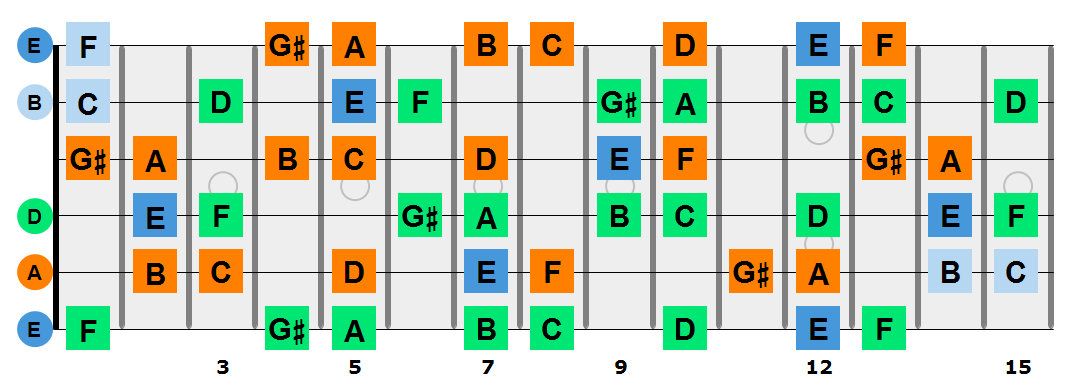Egyptian Scale
Andrew Wasson of Creative Guitar Studio answers questions from off of his Guitar Blog website…
Q). One problem I’m having when studying scales is that I don’t fully understand how to apply them. Especially, exotic scales. So, could you go through how a guitarist should approach this? Maybe, run through a scale for me I’m studying now, it’s the, “Egyptian Scale.” Thanks Andrew! Gus — Germany
A). The idea of practicing new scales (whether they’re exotic or not) has a lot to do with having a solid entrance approach with new scales. There’s a 3-Step process I like to use to help my own students with learning scales. Eventually this idea can be adapted to learn any new type of scale. The method begins with that of pattern recognition, so practice the heck out of your scale shapes all over the neck, in all keys… Also, you must recognize that every scale has it’s own unique harmony, (harmony = the chords that come from the scale you’re studying). Ultimately, there comes the creation of short chord progressions that you can jam on over & over again to attain your; licks, lines, runs, musical statements and ideas. Down the road the scale will become well engrained and very easy to create melodies with!
The Egyptian scale, also known as the “Egyptian mode” or “Phrygian dominant scale,” is a musical scale that has a distinctive and exotic sound. It is derived from the Phrygian mode, which is one of the medieval church modes.
The Egyptian scale is characterized by its unique interval pattern, which consists of a series of half steps and whole steps. The scale can be constructed starting on any note, but it is often described in relation to the note E. The interval pattern for the Egyptian scale in relation to E is:
E – F – G# – A – B – C – D – E
In terms of intervals, this can be represented as:
Root – Minor 2nd – Major 3rd – Perfect 4th – Perfect 5th – Minor 6th – Minor 7th – Root
The distinctive feature of the Egyptian scale is the augmented second interval between the second and third degrees (F to G# in the case of the E Egyptian scale). This interval gives the scale its exotic and mysterious quality.
The Egyptian scale has been used in various musical traditions, including Middle Eastern, Mediterranean, and Western music. It is often associated with music from Egypt and other parts of the Middle East, where it is used in traditional folk music, as well as in contemporary compositions and improvisations.
In Western music, the Egyptian scale has been employed by composers and musicians seeking to evoke an ancient or exotic atmosphere. It has found its way into various genres, including film scores, jazz, rock, and world music fusion.
Overall, the Egyptian scale is a unique and evocative musical scale that offers composers and musicians a rich palette of sounds and emotions to explore. Its distinct interval pattern and exotic flavor make it a captivating choice for creating music with a sense of mystery, adventure, and cultural richness.
